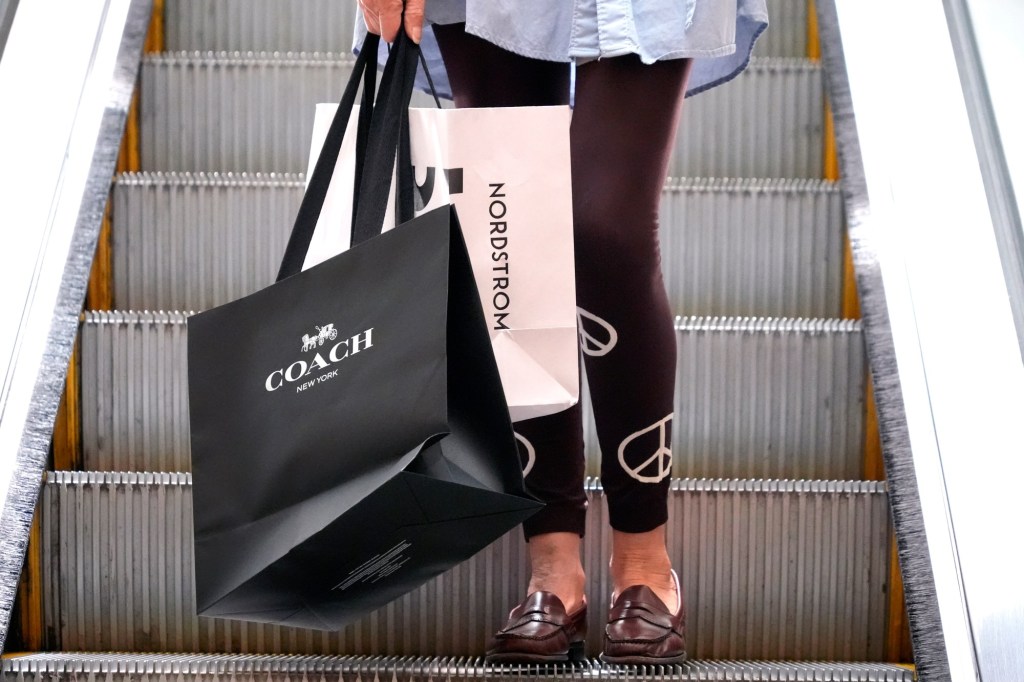By CHRISTOPHER RUGABER
WASHINGTON (AP) — It’s a trend that has surprised many: Why, despite being squeezed by high prices, have Americans kept spending at retail stores and restaurants at a robust pace?
One key reason is a relatively simple one: Wealthier consumers, boosted by strong gains in income, home equity and stock market wealth, have increasingly driven the spending.
That trend, documented by Federal Reserve research, represents something of a shift from the pre-pandemic period. And it suggests that consumer spending, the primary driver of the U.S. economy, could help sustain healthy growth this year and next.
Lower-income consumers, by contrast, have been disproportionately squeezed by higher-priced rent, groceries and other necessities, leaving them less able to spend on discretionary items, like electronics, entertainment and restaurant meals, than they were before the pandemic. Though their spending is starting to rebound as inflation-adjusted incomes rise, it could be years before their finances fully recover.
The disparities help explain the gap between gloomy consumer sentiment and widespread evidence of a healthy U.S. economy — a major dynamic in the presidential race that is now in its final weeks. Only a portion of the American population is fueling most of the growth that is evident in government economic data.
The trends also help illustrate how the economy has managed to keep expanding at a solid pace even though the Federal Reserve, until last month, kept its key interest rate at its highest level in more than two decades. Despite the much higher borrowing costs for mortgages, auto loans and credit cards that resulted from the Fed’s rate hikes, inflation-adjusted consumer spending rose 3% in 2022 and 2.5% in 2023. And it increased at a 2.8% annual rate in the April-June quarter, the government said last month.
On Thursday, the Commerce Department reported that retail sales in the United States rose 0.4% from August to September, a solid gain that suggested that shoppers are confident enough in the economy to continue spending freely. Restaurant sales jumped 1%, a particularly encouraging sign because it meant that many people felt they could spend on meals outside the home. The Federal Reserve Bank of Atlanta now estimates that the economy grew at a strong 3.4% in the July-September quarter.
Higher-income households have been fortified by huge gains in housing and stock market wealth since the pandemic. Home values have marched steadily up, fueled by high demand and an unusually low supply of houses. And the stock market has been consistently hitting new highs, with the S&P 500 index up a sizzling 22.5% for the year. Roughly 80% of stock market value is owned by the richest 10% of U.S. households.
“It speaks to the ongoing strength of those Americans, which is still carrying overall spending,” said Michael Pearce, deputy chief U.S. economist at Oxford Economics.

Housing and stock values have soared in particular for the wealthiest one-tenth of Americans over the past four years. The value of their home equity has leapt 70% from the first quarter of 2020 through the second quarter of this year, according to Fed data — to $17.6 trillion. Their stock and mutual fund wealth has jumped 86%, to just under $37 trillion. Though inflation has eroded some of those gains, they are still quite substantial.
Such sharp growth in wealth has reduced the need for affluent Americans to save from their paychecks while still ramping up their spending. A report last week by Fed economists found that before the pandemic, retail spending had been rising for all income groups at roughly the same pace. But about three years ago, the trend shifted: Upper- and middle-income consumers started spending at a much faster pace than lower-earners.
By August 2024, inflation-adjusted spending on retail goods was nearly 17% higher than it was in January 2018 for upper-income households, defined as those earning more than $100,000. For middle-income households — earning $60,000 to $100,000 — their spending rose 13.3% during the same period, the Fed study found. And for those earning less than $60,000, spending has risen just 7.9% since 2018. It actually fell from mid-2021 through mid-2023.
“Middle- and high-income households have been fueling the strong demand for retail goods,” Fed economist Sinem Hacioglu Hoke and two colleagues wrote.
Among those who have felt pressure to spend cautiously is Helaine Rapkin, a 69-year-old teacher who was shopping last week at a Kohl’s in Ramsey, New Jersey, looking for discounts on athletic wear and gifts for her nephew, niece and daughter. Rapkin said she’s wrestling with higher costs on a range of items and isn’t feeling the benefits of a dramatically reduced inflation rate.
“I am not feeling good at all,” she said. “I can’t believe how expensive things have gotten…Clothes or food.”

















































